You are here
Simple Exercises to Keep Your Shoulders Healthy - Part One
 Like your hip, your shoulder joint is a classic ball and socket joint that affords great flexibility. But with great range of motion comes greater potential for injury. Makes perfect sense, right? With a wide range of motion, the soft tissues that surround your shoulder joint are more likely to experience strains and even small tears than the ligaments and muscles that surround less mobile joints like those in your elbow and fingers.
Like your hip, your shoulder joint is a classic ball and socket joint that affords great flexibility. But with great range of motion comes greater potential for injury. Makes perfect sense, right? With a wide range of motion, the soft tissues that surround your shoulder joint are more likely to experience strains and even small tears than the ligaments and muscles that surround less mobile joints like those in your elbow and fingers.
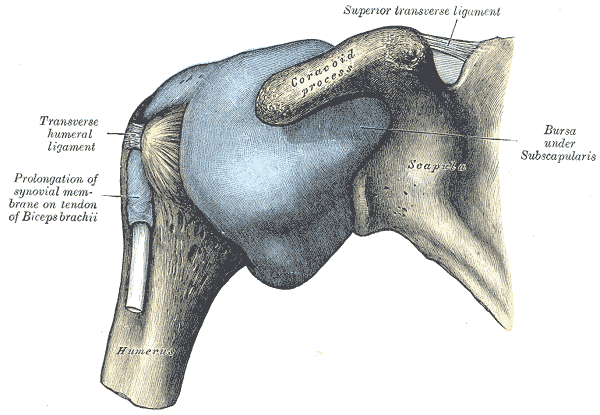 Also like your hip joint, your shoulder is stabilized by a combination of ligaments and muscles. You shoulder joint is also partially covered by a fluid-filled sac called your subacromial bursa, which acts as a lubricant of sorts, decreasing friction that can occur between joint surfaces, ligaments, and tendons.
Also like your hip joint, your shoulder is stabilized by a combination of ligaments and muscles. You shoulder joint is also partially covered by a fluid-filled sac called your subacromial bursa, which acts as a lubricant of sorts, decreasing friction that can occur between joint surfaces, ligaments, and tendons.
Two of the most common chronic health problems that tend to occur in the shoulder joint - adhesive capsulitis (frozen shoulder) and impingemment syndrome - share the following root causes:
-
Slouching forward with your shoulders, which decreases space within your shoulder joint for tendons, ligaments, blood vessels, and nerves, and also interferes with proper movement of your shoulder blade (scapula) against your ribcage, which puts unnecessary strain on your shoulder joint.
-
Tightening of the ligaments (capsule) that surround your shoulder joint (glenohumeral joint), which can occur from lack of use and/or an accumulation of minor sprains and small tears.
Think about a child swinging freely on a set of monkey bars. Healthy shoulder joints should be able to support the rest of your body while your arms are completely outstretched and forced through a wide range of motion as you swing in any direction. Your shoulders are designed to allow this type of strength and flexibility.
Of course, if you have an existing injury - like a shoulder that tends to dislocate or a tear that hasn't been repaired - you probably need to tailor your expectations.
But injured or not, there's no question that you can dramatically decrease your risk of experiencing shoulder pain and stiffness by performing a few simple exercises on a daily basis. Exercises that promote healthy muscles, tendons, and ligaments throughout your shoulder region, including the ligamentous capsule that tightly envelopes each of your shoulder joints.
Simple Exercises for Healthy Shoulders
Towel Stretch
Take a towel in your right hand and hold it behind your head as though you are holding a long back scratcher.
Wrap your left arm around your left lower back so that the bony side of your left hand is against your left lower back, just as a lady would begin to reach around to fasten her bra. In this position, your left hand should be able to easily hold onto the bottom of the towel.
Once both hands are firmly holding onto both ends of the towel, slowly pull down on the towel with your left hand until you feel a good stretch throughout your right shoulder. Hold for about thirty seconds and maintain steady breathing.
Then, use your right hand to slowly pull up on the towel until you feel a good stretch in your left shoulder. Hold this stretch for another 30 seconds and make sure that you don't stop breathing.
Now repeat the same routine on the other side, with your left hand holding the top of the towel and your right hand holding the bottom.
This towel stretch is the best overall stretch that I'm aware of for the ligamentous capsules that surround your shoulder joints.
Lat Stretch
Find a pole or edge that you can clasp onto with your right hand and lean back with your body weight without the pole or edge moving.
Stay balanced by standing on your legs in a wide, tandem-like position with your knees bent, and if needed, by holding onto another stabilizing pole or edge with your left hand.
Now pull back with your body weight and pretend that you are gently trying to pull your right elbow back to your right hip, but keep your right arm straight so that you feel a nice stretch along the outside of your right trunk. Hold for about thirty seconds.
You're targeting your latissimus dorsi (lat) muscle with this stretch, as well as the rotator cuffs and other muscles that run across the back of your shoulder and shoulder blade region.
Repeat on the other side, and maintain steady breathing throughout.
Posterior Deltoid Stretch
To more fully target the back of your shoulder region, use your left hand to pull your right arm across the front of your chest, with your left palm or forearm positioned on the back of your right arm, just above the right elbow. Try to fully relax the right shoulder and pull with your left arm until you feel a nice stretch behind your right shoulder. Hold for thirty seconds and maintain steady breathing.
To increase intensity and target the tissues that lie in the lower portion of the posterior deltoid region, angle your right arm upward about 10 to 20 degrees.
Repeat on the other side.
Hanging Stretch
With your hands about shoulder width apart, hang from a stable bar for as long as is comfortable. Really hang; think of your hands as being hooks that are allowing the rest of your body to freely dangle. Don't forget to breathe.
This exercise does a marvelous job of stretching all of the ligaments, muscles, and tendons surrounding your shoulder joints, along with many of the soft tissues that cross your shoulder joints but that travel a good distance away from your shoulders, like your biceps tendons, triceps tendons, latissimus dorsi tendons, and even the tendons of your front chest muscles.
It also reverses the forward slouching tendency that so many of us have working at a desk.
To increase the intensity of this hanging stretch, bring your hands side by side on the bar.
And of course, there's no need to use your full body weight. Though just a few seconds of hanging while supporting your full body weight can be highly beneficial, it's also helpful to hang while supporting some of your body on a stool or chair.
When using a stool or chair with this hanging stretch, over time, as you build strength and endurance, you can distribute more load to your arms and less to your legs.
If you hang with your full body weight dangling in the air, an advanced stretch would involve allowing your body to gently swing forward and back and even side to side.
If you don't have time to do all of the stretches described here, strive to do just one or two. Every little bit should help keep your shoulders healthy, and you can one day consider yourself lucky for never having developed frozen shoulder or impingement syndrome like folks around you, though you can give silent thanks to yourself for having created your luck. :)
As with all programs of self care, I have to recommend that you consult with your personal physician before you get started.
Enjoy.
P.S. If you don't have a foam roller and are looking to invest in one that offers a blend of comfort, durability, and ideal density to provide therapeutic rolling of your muscles and ligaments, please feel free to have a look at the one that I had custom made for our clients here:
For a DVD that presents still photos and video clips that illustrate how to take your body through all of the major stretches and foam rolling exercises you can do to keep your body as healthy as your genetics will allow, have a look here:
Stretching and Foam Rolling DVD, by Sharon Lee and Dr. Ben Kim
Join more than 80,000 readers worldwide who receive Dr. Ben Kim's free newsletter
Receive simple suggestions to measurably improve your health and mobility, plus alerts on specials and giveaways at our catalogue
Please Rate This
Highest Rated | Related Posts | ||







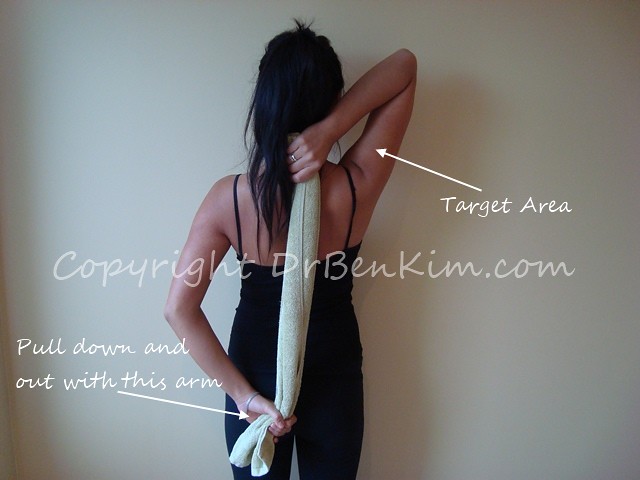
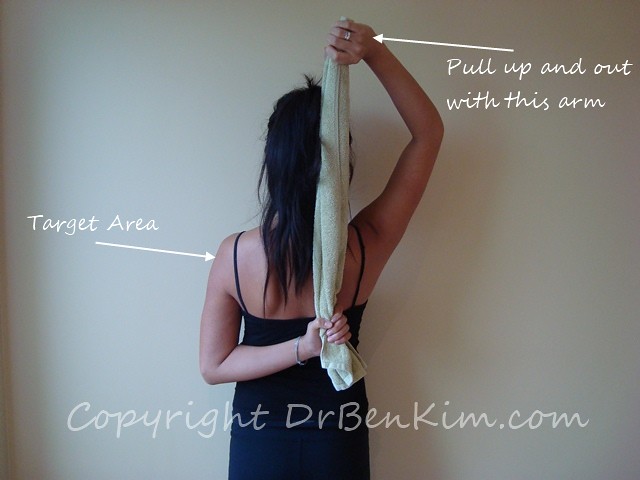
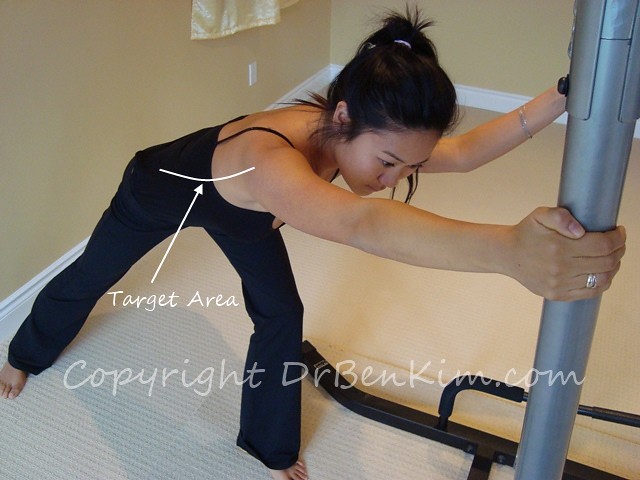
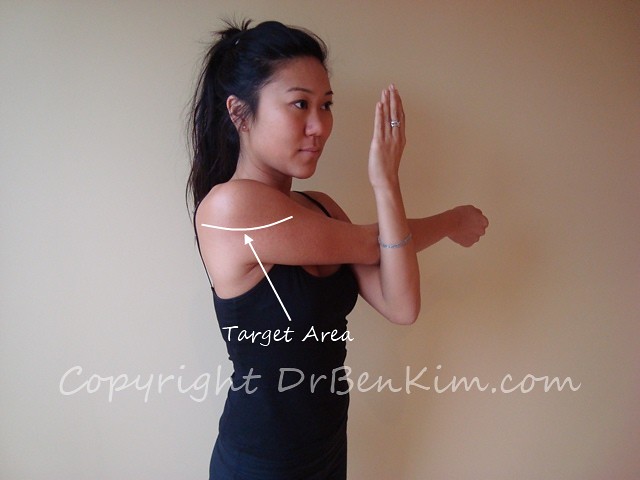


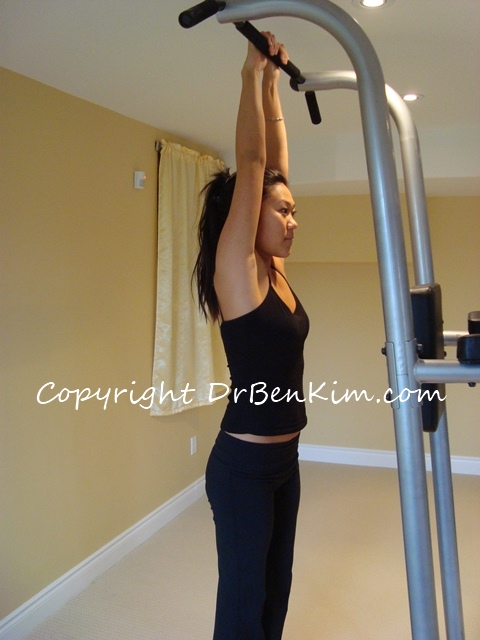
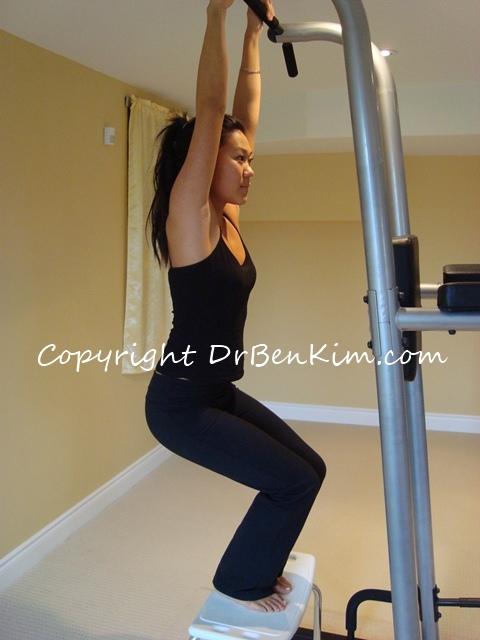



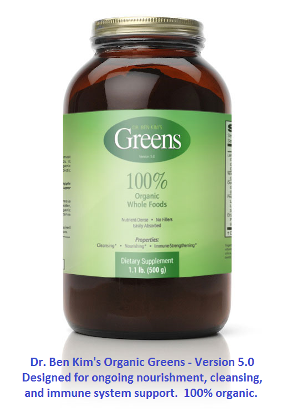
Comments
healthy shoulders
With a recent onslaught of tendonitis, I'm exercing very carefully. I can tell, though, it's already helping.
your exercises for stretching ligaments,tendons,ect.
As uaual,wonderful! Thank you! Lori Ann